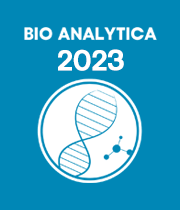Title: Chromatographic methods for authenticating bee pollen origin
Abstract:
Bee pollen has been used in the human diet for many centuries, and its ever-increasing consumption results from its nutritional value and health-promoting effects, like those relating to its antioxidant, anti-inflammatory, anticarcinogenic, antibacterial or anti-fungal properties. The nutritional value/quality and health properties of bee pollen are linked to its constituents, which include proteins, amino acids, lipids, carbohydrates, phenolic compounds vitamins, or minerals, among several other compounds. However, its composition varies greatly according to several factors, like botanical and geographical origins, climatic conditions, the type of soil, or harvesting and processing conditions. This is quite important to prevent one of the main problems currently affecting the commercialization of bee pollen, and consequently the beekeeping industry; this is the fraudulent practice of adulteration with pollen from other sources/origins, for instance, pine pollen. As may be expected, studying the profile of a particular family of compounds (proteins, amino acids, lipids, phenolic compounds, or minerals) in bee pollen has been proposed, to specify/authenticate its origin and to evaluate the corresponding nutritional value or health-promoting effect.
Therefore, the main goal of this presentation is to investigate the potential of three families of bioactive compounds (amino acids, betaines and glucosinolates), some of them scarcely investigated in this matrix (betaines and glucosinolates, and amino acids), as bee pollen markers, by determining with different chromatographic techniques (high performance liquid chromatography (HPLC) and gas chromatography (GC)) and sample treatments (solvent extraction and solid-phase extraction) their respective content in bee pollen samples from experimental apiaries located within the same area (Marchamalo, Guadalajara, Spain); these were collected in three consecutive harvesting periods in the same year (April-May; June; July-August). It should be mentioned that in all cases, new analytical methods were proposed, which fulfilled some of the principles of the green analytical chemistry, and that they were fully validated according with current legislation. Results showed that bee pollen samples can be classified in most cases, by means of a canonical discriminant analysis (CDA) based on the content of the different compounds, according to the corresponding apiary of origin or the harvesting periods; the potential of these compounds as bee pollen markers may thereby be demonstrated, and subsequently, new tools for authenticating bee pollen origin were provided.
Audience Take away Notes:
- Audience will know that there is a growing problem related to the authentication of the origin of be products, and of bee pollen in particular, because of the detected fraud in its commercialization.
- They will be firstly proposed some compounds as pollen markers (glucosinolates and betaines) which also possess some nutritional and bioactive properties. Therefore, it was necessary to propose new analytical methods that were also fully validated. In relation to amino acids analysis, they will be compared two commercial kits for HPLC and GC to choose the most convenient for obtaining a rapid amino acid profile.
- It will be also highlighted the potential of chromatographic techniques to determine those compounds, and the need of employing different approaches depending on the physico-chemical properties of the compounds.
- The need of using chemometric tools, like CDA, as a complement for the analytical methods in order to obtain more relevant conclusions.


